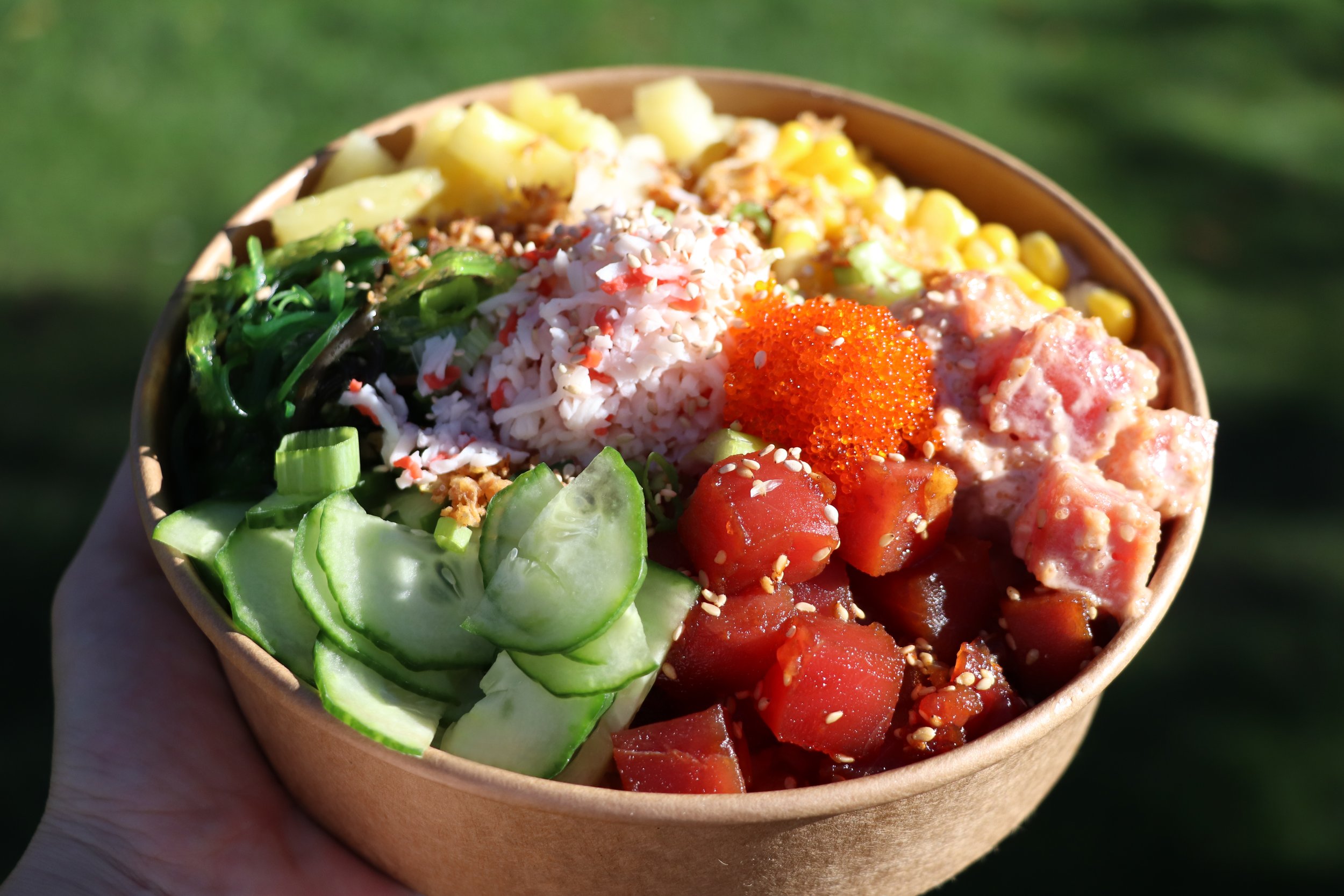ALL YOU NEED TO KNOW ABOUT HAWAIIAN POKÉ BOWLS
The thing that makes poké so popular is that it is a fresh, healthy, high-protein — and, in many cases, fully customizable — food option.
Meet Poké: The Hawaiian Street Food That’s Taken Over Takeout
The number of poké (pronounced poh-keh) restaurants and poké bars has almost tripled across North America since 2014. And that's only counting restaurants dedicated to this Hawaiian street food — On top of that, another 33% (or more) of restaurant businesses have also added poké bowls to their menus.
That said, it can still be challenging to find the best poké restaurant in your neighborhood.
Intro to Poké
At the start, there were really two specific types of customers interested in poké. Firstly, food hipsters — those who want unique eating experiences with artisanal, unusual ingredients. And, secondly, fad diet followers on the hunt for low-carb, gluten-free, paleo-friendly foods.
Yet poké (especially the original ahi poké) has become a staple for folks looking for grab-and-go meals that they can feel good about.
What Is Poké, Anyway?
Poké is a type of raw seafood salad made with (mostly) Japanese and East Asian ingredients. Generally speaking, poké contains:
A base of seasoned, warm sushi rice;
Cold sushi-grade seafood (fish, octopus, or scallops) cut into roughly bite-sized pieces;
Some type of “umami” (savory) poké bowl sauce;
Nuts, seeds, and/or vegetable toppings.
What It’s Not
Poké chefs are careful to note that poké is neither sashimi nor sushi. There are some similarities, of course. The seafood ingredients are sushi-grade and the flavors come from the same regions. Poké is actually more like Peruvian ceviche since the seafood ingredients are marinated. But poké bowl sauce is not at all citrus-based and not designed to cure the meat.
What Every Poké Bowl Recipe Has In Common
Traditional poké uses ahi tuna or octopus, sushi rice, soy sauce/sesame oil, sesame seeds, macadamia nuts, and seaweed. That may explain why the most common (and popular) choice at any poké bar is the tuna poké bowl. The type of tuna varies between menus, but whether it’s bluefin, yellowfin, shi, or ahi poké, it’s almost always tuna.
But if you’re feeling adventurous, there’s a lot of different options when it comes to poké bowl recipes. Some restaurants use specialty seafood, like marlin, scallops, shrimp, or salmon. Others make tofu and other non-seafood proteins available. Searching for “poké bars near me” that use non-traditional ingredients can also get you places where different grains (brown rice, purple sticky rice, farro, or quinoa) and toppings (like avocado, edamame, or sliced carrots and beets) are the norm.
How To Spot The Best Poké In The Pacific
There are a few things that can make-or-break your poké experience. That’s true whether you choose a dine-in restaurant or a fast-casual poké bar where you can custom build your poké bowl.
Many times, your dining experience depends on the seafood ingredient. Specifically, most poké chefs agree that it is important to use fresh, free-range seafood that has never been frozen. They also tend to agree that fattier types and cuts of fish taste better!
Find The Best Poké In Vancouver
All that being said, getting the best poké in Vancouver takes a little more than just a search for “poké near me.” You should look for signs (in reviews, food photos, and menus) of good seafood selection. But also look for proof that their poké bowl recipes balance different textures and temperatures in the dish. That is, use cold fish, warm rice, crunchy macadamia nuts, umami (not acidic or overly spicy) sauce, etc.
After all, the best poké restaurant knows that, though poké is a simple dish, there’s nothing simple about putting it together well!

